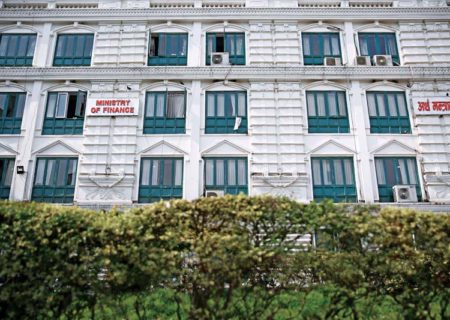MoF mulls hybrid annuity in infra sector
Kathmandu, February 19
To make contractors more responsible, the government is preparing to introduce a provision whereby the contractors will be made accountable for the project they have developed for up to 10 years after its completion.
Along with the provision to hold the contractor accountable for a longer period — which in turn is expected to enhance the quality of work, especially in large infrastructure projects, such as hydropower, roads, airports and railways — the Ministry of Finance (MoF) is also mulling over implementing the Hybrid Annuity Model (HAM).
In financial terminology, hybrid annuity means that the government makes payment in a fixed amount for a considerable period and then in a variable amount in the remaining period.
Currently a large number of countries have been following the HAM method for projects developed under different models, including public-private partnership (PPP) and engineering, procurement and construction (EPC).
Under HAM method, the contractors who have contracted to construct infrastructure project do not receive full payment during the project period. The contractor does not receive full payment during the construction and repair period either. At the end of the repair period, the government clears the payment according to the prevailing interest of the amount payable to the contractor.
Shree Krishna Nepal, head of International Economic Cooperation Coordination Division and joint secretary at the Ministry of Finance, informed that the government plans to immediately initiate the HAM method for new infrastructure projects, with special focus on donor-backed and those being developed through loan assistance.
“We are holding discussions on paying 70 per cent of the cost to the contractor during the project period and paying the remaining amount with interest at the end of the repair period of 10 years,” he added. “If we are able to implement HAM, it will make contractors more responsible as they will have to invest 30 per cent of the stipulated amount in the project.”
As per Nepal, MoF has forwarded the details of the plan to the Ministry of Physical Infrastructure and Transport for further processes.
Informing that the related technical issues need to be sorted out still, he said, “The existing Public Procurement Act needs to be amended before we can implement HAM.”
He further said that once the act is amended, the MoF plans to first test HAM on a large project financed by the World Bank — expansion of the 96-kilometre-long Thankot to Mugling strategic road section into four lanes.
The Department of Roads is preparing the detailed report of the said project.
“The defect liability period will be included in the contract agreement of the project.”
In India, the HAM is a mix of build, own, operate and transfer (BOOT) annuity and EPC models. As per the design, the Indian government contributes 40 per cent of the project cost in the first five years through annual payments (annuity).
The remaining payments are made on the basis of the assets created and the performance of the developer.






